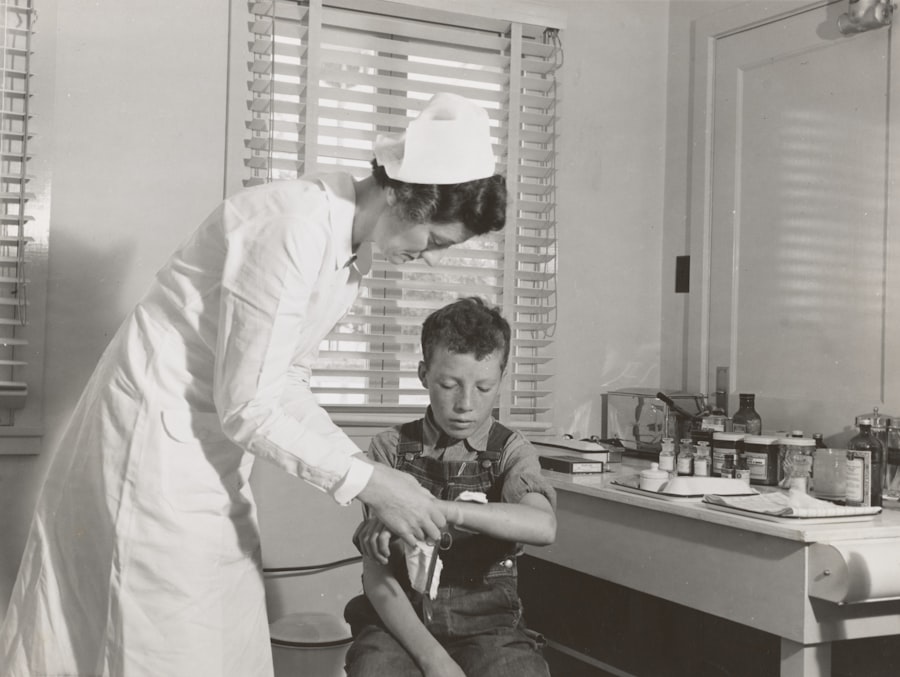To effectively engage with potential patients, it is crucial to have a deep understanding of the target audience. This involves not only identifying demographic factors such as age, gender, and socioeconomic status but also delving into psychographic elements like values, interests, and lifestyle choices. For instance, a dental practice may find that its primary audience consists of young families who prioritize preventive care and are looking for a provider that offers a welcoming environment for children.
By recognizing these characteristics, healthcare providers can tailor their marketing strategies to resonate with the specific needs and preferences of their audience. Moreover, understanding the target audience extends to recognizing their pain points and motivations. For example, many individuals may experience anxiety when visiting a healthcare provider, which can deter them from seeking necessary treatments.
By addressing these concerns through empathetic communication and showcasing a calming office atmosphere, practices can alleviate fears and encourage patients to engage with their services. Conducting surveys or focus groups can provide valuable insights into patient expectations and experiences, allowing healthcare providers to refine their approach and foster stronger connections with their audience.
Key Takeaways
- Know your target audience to tailor marketing strategies effectively.
- Use digital marketing tools to reach and engage potential patients online.
- Develop compelling content that educates and attracts your audience.
- Leverage social media platforms to build community and increase visibility.
- Enhance growth through referral programs, partnerships, and exceptional patient care.
Utilizing Digital Marketing
In today’s digital age, leveraging digital marketing is essential for healthcare providers aiming to reach a broader audience. This encompasses a variety of strategies, including search engine optimization (SEO), pay-per-click advertising, and email marketing. SEO is particularly important as it helps practices appear in search results when potential patients are looking for services online.
By optimizing their websites with relevant keywords and creating high-quality content, healthcare providers can improve their visibility and attract more visitors. Additionally, pay-per-click advertising allows practices to target specific demographics and geographic areas effectively. For instance, a local clinic can create ads that appear when users search for terms like “family doctor near me” or “pediatric dentist.” This targeted approach ensures that marketing efforts are directed toward individuals who are actively seeking healthcare services.
Email marketing also plays a vital role in maintaining communication with existing patients and nurturing leads. Regular newsletters that provide health tips, updates on services, or special promotions can keep the practice top-of-mind for patients and encourage them to schedule appointments.
Creating Engaging Content

Content creation is a cornerstone of effective digital marketing strategies. Engaging content not only attracts potential patients but also establishes the practice as a trusted authority in the healthcare field. This can take various forms, including blog posts, videos, infographics, and podcasts.
For example, a practice specializing in dermatology might create informative blog posts about common skin conditions, treatment options, and skincare tips. By providing valuable information, the practice can build credibility and encourage readers to seek their services. Moreover, incorporating storytelling into content can enhance its appeal.
Sharing patient success stories or testimonials can create an emotional connection with potential patients, making them more likely to choose that practice for their healthcare needs. Visual content, such as videos demonstrating procedures or virtual tours of the facility, can also engage audiences more effectively than text alone. By diversifying content formats and focusing on quality, healthcare providers can capture the attention of their target audience and foster a sense of community around their brand.
Leveraging Social Media Platforms
| Social Media Platform | Monthly Active Users (Millions) | Average Engagement Rate (%) | Primary Content Type | Best Use Case |
|---|---|---|---|---|
| 2900 | 1.6 | Text, Images, Videos | Brand Awareness & Community Building | |
| 2000 | 1.22 | Images, Stories, Reels | Visual Marketing & Influencer Collaboration | |
| 450 | 0.045 | Text, Images, Videos | Real-time Updates & Customer Engagement | |
| 900 | 0.54 | Text, Articles, Videos | Professional Networking & B2B Marketing | |
| TikTok | 1500 | 5.3 | Short Videos | Viral Content & Youth Engagement |
| 450 | 0.2 | Images, Infographics | Product Discovery & Visual Inspiration |
Social media platforms have transformed the way healthcare providers interact with their audiences. These platforms offer an opportunity to engage with patients on a more personal level while also promoting services and sharing valuable information. For instance, a practice can use Facebook to post health tips, answer common questions, or share updates about new services or technologies being offered.
Instagram, with its visual focus, is ideal for showcasing before-and-after photos of treatments or sharing behind-the-scenes glimpses of the practice. Engagement on social media is not just about broadcasting information; it also involves responding to comments and messages promptly. This two-way communication fosters trust and builds relationships with patients.
Additionally, social media advertising allows practices to reach specific demographics based on interests and behaviors, making it easier to connect with potential patients who may not be aware of the practice otherwise. By creating a consistent and engaging social media presence, healthcare providers can enhance their visibility and strengthen their brand identity.
Implementing Referral Programs
Referral programs are an effective way to leverage existing patient relationships to attract new clients. By incentivizing current patients to refer friends and family members, practices can tap into the power of word-of-mouth marketing. For example, a dental office might offer discounts on future services for both the referring patient and the new patient they bring in.
This not only rewards loyal patients but also encourages them to share their positive experiences with others. To maximize the effectiveness of referral programs, practices should ensure that they communicate the details clearly to their patients. This could involve sending out emails or including information in newsletters about how the program works and the benefits of participating.
Additionally, tracking referrals can help practices understand which patients are most engaged and which marketing strategies are yielding results. By fostering a culture of referrals, healthcare providers can create a sustainable growth model that relies on satisfied patients advocating for their services.
Offering Educational Workshops and Seminars

Educational workshops and seminars provide an excellent platform for healthcare providers to engage with their community while showcasing their expertise. These events can cover various topics relevant to the practice’s specialty, such as nutrition workshops by a dietitian or informational sessions about managing chronic conditions by primary care physicians. By offering valuable knowledge in an interactive format, practices can position themselves as trusted resources within their communities.
Moreover, these events allow for direct interaction between healthcare providers and potential patients. Attendees can ask questions, express concerns, and gain insights into the services offered by the practice. This personal connection can significantly influence their decision-making process when choosing a healthcare provider.
Additionally, workshops can be promoted through digital marketing channels and social media platforms to attract a larger audience. By investing time in educational initiatives, healthcare providers not only enhance their reputation but also foster community engagement.
Building Strategic Partnerships
Strategic partnerships with other businesses or organizations can amplify a healthcare provider’s reach and enhance service offerings. Collaborating with local gyms, wellness centers, or schools can create mutually beneficial relationships that promote health and wellness within the community. For instance, a physical therapy clinic might partner with a local gym to offer joint workshops on injury prevention or rehabilitation exercises.
This not only provides value to both parties but also introduces each organization’s clientele to the other’s services. Furthermore, partnerships with local businesses can lead to cross-promotional opportunities that benefit both entities. For example, a pediatric practice could collaborate with a nearby children’s clothing store to offer discounts or host family-friendly events together.
Such collaborations not only increase visibility but also foster goodwill within the community by demonstrating a commitment to local health initiatives. By strategically aligning with other organizations that share similar values or target audiences, healthcare providers can expand their influence and attract new patients.
Providing Exceptional Patient Experiences
The cornerstone of any successful healthcare practice lies in delivering exceptional patient experiences. From the moment a patient walks through the door until they leave after their appointment, every interaction should reflect a commitment to quality care and customer service. This begins with creating a welcoming environment where patients feel comfortable and valued.
Friendly staff members who greet patients warmly and address their concerns promptly can set the tone for a positive experience. Moreover, effective communication is vital in ensuring that patients feel informed and empowered throughout their healthcare journey. This includes providing clear explanations of procedures, answering questions thoroughly, and following up after appointments to check on patient satisfaction.
Implementing feedback mechanisms such as surveys or suggestion boxes can help practices identify areas for improvement and demonstrate that they value patient input. By prioritizing exceptional experiences at every touchpoint, healthcare providers can foster loyalty among existing patients while attracting new ones through positive word-of-mouth recommendations.



